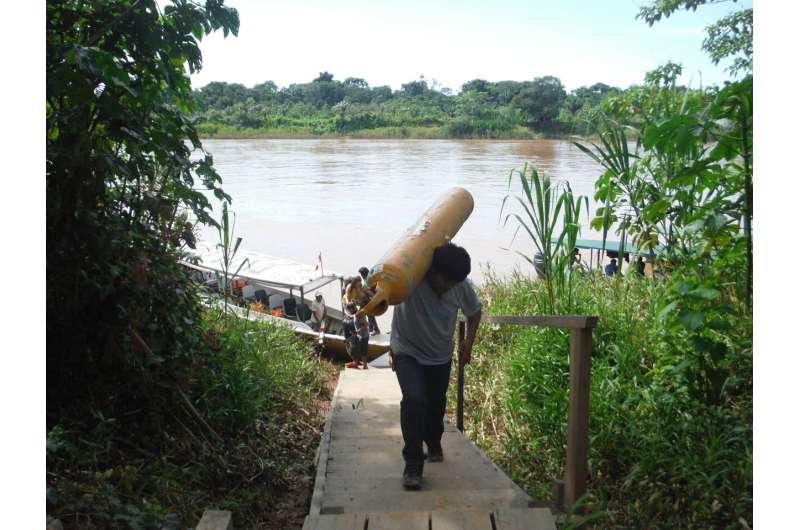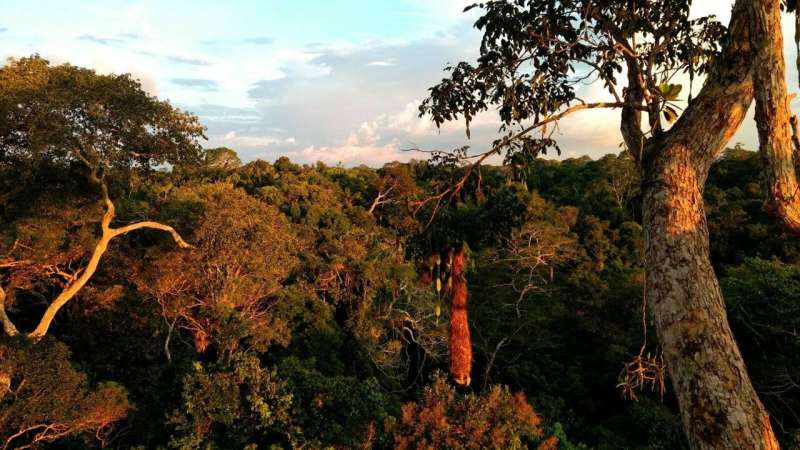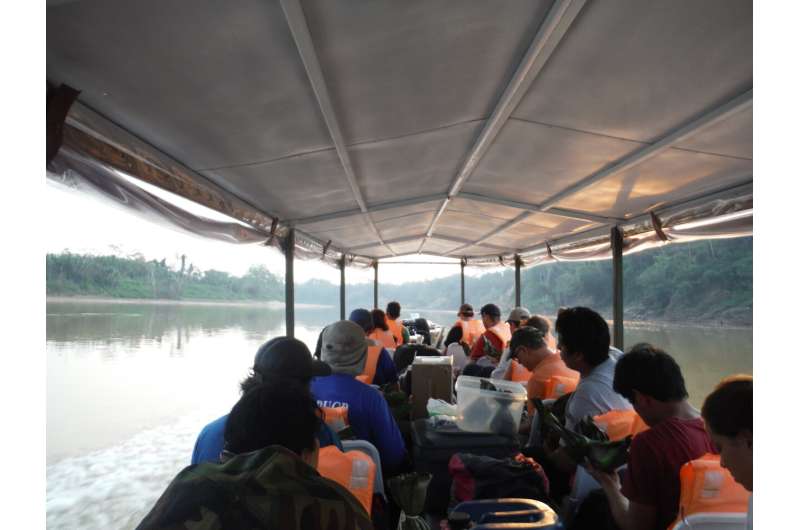This article has been reviewed according to Science X's editorial process and policies. Editors have highlighted the following attributes while ensuring the content's credibility:
fact-checked
peer-reviewed publication
trusted source
proofread
How the Amazon rainforest is likely to cope with the effect of future drought

A major collaboration involving 80 scientists from Europe and South America has identified the regions of the Amazon rainforest where trees are most likely to face the greatest risk from drier conditions brought about by climate change.
Based on the analysis, the scientists predict trees in the western and southern Amazon face the greatest risk of dying.
They also warn that previous scientific investigations may have underestimated the impact of drought on the rainforest because those studies focused on the central-eastern part of the forest, which is the least vulnerable to drought.
The latest study provides the first assessment across the entire Amazon Forest of how different areas are likely to respond to a climate that could get warmer and drier, and it comes as some studies predict the rainforest will experience increased periods of drought.
Professor David Galbraith, from the University of Leeds who supervised the study, said, "The Amazon is threatened by multiple stressors, including deforestation and climate. Understanding the stress limits that these forests can withstand is a major scientific challenge. Our study provides new insights into the limits of forest resistance to one major stressor—drought."
Some parts of the Amazon have already seen changes in rainfall patterns. In the southern Amazon, there is evidence that the dry season has become longer, and temperatures in this region have increased more than in other parts of the Amazon. The changes in the southern Amazon are partially due to extensive deforestation.
Dr. Julia Tavares, who led the study while undertaking a Ph.D. at Leeds and is now based at Uppsala University in Sweden, said, "A lot of people think of the Amazon as one large forest. But it is not. It is made up of numerous forest regions that span different climate zones, from locations that are already very dry to those that are extremely wet, and we wanted to see how these different forest ecosystems are coping so we could begin to identify regions that are at particular risk of drought and drier conditions."
The research team said their findings were removing a "...major knowledge bottleneck of how climate change will impact this critical ecosystem."
The paper, "Basin-wide variation in tree hydraulic safety margins predicts the carbon balance of Amazon forests," is published today (Wednesday, April 26) in Nature.
Tree doctors
The research team, known as the "tree doctors" to the communities living in the forest, took measurements and samples over a year from 11 separate sites across the western, central-eastern and southern Amazon—covering Brazil, Peru and Bolivia.
The study involved data from 540 individual trees across 129 species.

The researchers wanted to determine how resistant different tree species and forests were to drought conditions. The scientists then used the data to test whether forest vulnerability to drought could predict its ability to accumulate and store carbon taken from the atmosphere.
From the data, the research team was able to quantify how safe the trees were from drought-related death.
Findings
In the southern part of the Amazon Forest, where historically there have been declining levels of rainfall, the trees showed the greatest degree of adaptation to cope with drought.
Despite that, though, the study revealed that the trees faced the biggest risk of dying due to drought. This is likely because the region has already seen rapid climate change and disruption to rainfall patterns caused by deforestation, which had pushed trees to the limits of their ability to cope.
In contrast, the tree species in the wettest parts of the Amazon Forest showed the lowest level of adaptation to drought yet they were the safest in terms of the risks from future climate change because, so far at least, they had not been impacted by changes in rainfall.
Equipped with this more nuanced view of how different parts of the Amazon Forest could respond to drought, the researchers warn that scientific investigations, which have tended to concentrate on the central-eastern region, where trees have shown some of the greatest adaptations to cope with drier conditions, may have underestimated how vulnerable other forest regions are to climate change.
They say the findings of the new study should be used to help update and refine existing models on how the Amazon may be impacted by drier conditions.

Carbon storage
According to the researchers, the Amazon Forest holds between 10% and 15% of the carbon stored by vegetation globally, and it plays a key role in taking up carbon which would otherwise be in the atmosphere.
Modeling revealed that as plant drought mortality risk increases, the ability of the trees to store carbon would be significantly reduced. The most water stressed part of the Amazon is in the south-eastern region. Analysis reveals that the trees in this location no longer act as a large-scale carbon store.
Professor David Galbraith said, "This study reveals how forest risk to drought varies across the Amazon Basin and provides a mechanism for predicting carbon balance at the forest stand level. Forests that are 'safer' from drought-induced mortality are accumulating more carbon than those that face greater risk of drought-induced mortality.
Professor Emanuel Gloor, also from the University of Leeds who co-supervised the study, added, "The pattern of resilience and risks identified among the different tree populations across the in the study will be used to build more effective and accurate climate models of the way the Amazon may change as the region responds to climate change."
More information: Basin-wide variation in tree hydraulic safety margins predicts the carbon balance of Amazon forests, Nature (2023). DOI: 10.1038/s41586-023-05971-3. www.nature.com/articles/s41586-023-05971-3
Journal information: Nature
Provided by University of Leeds




















